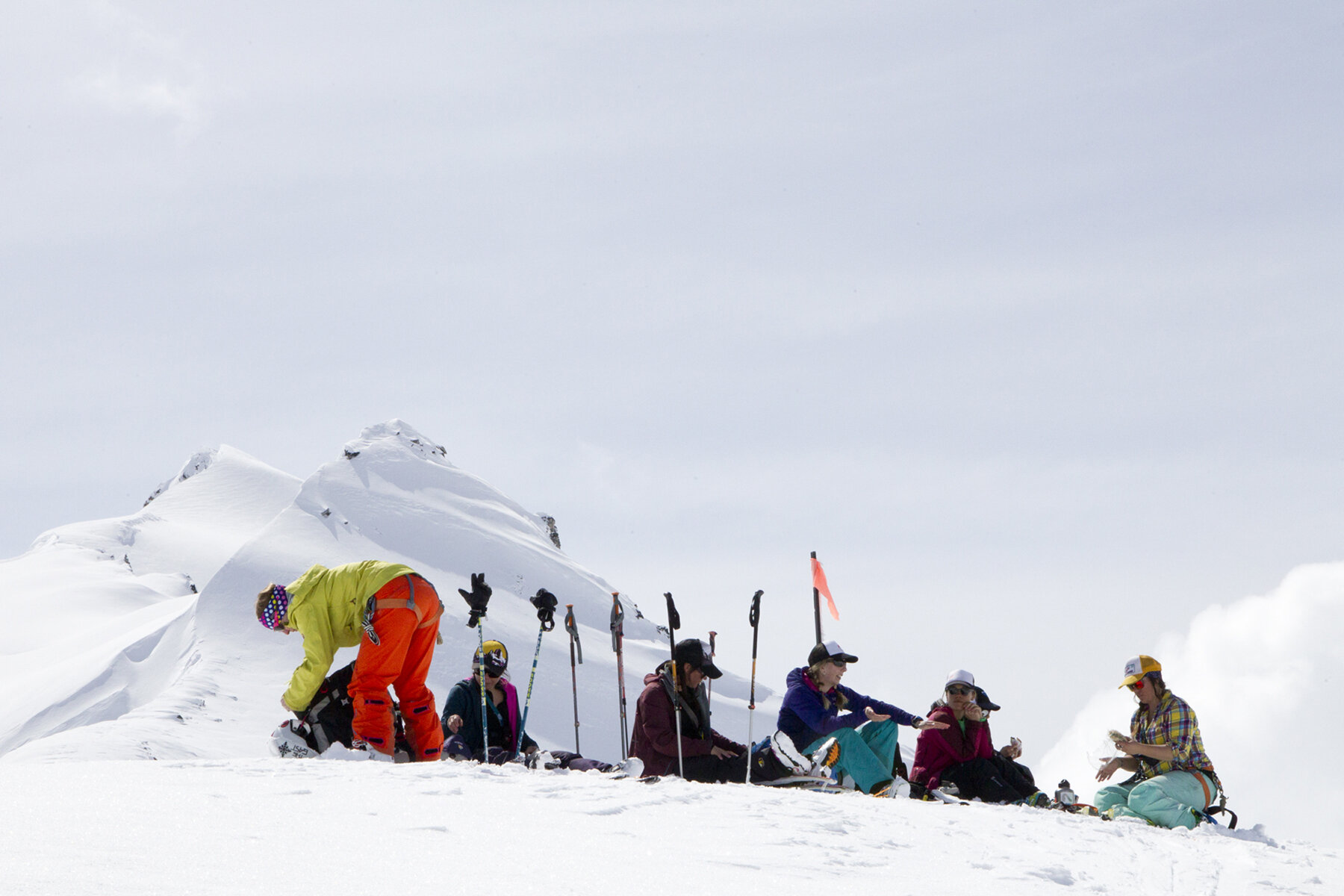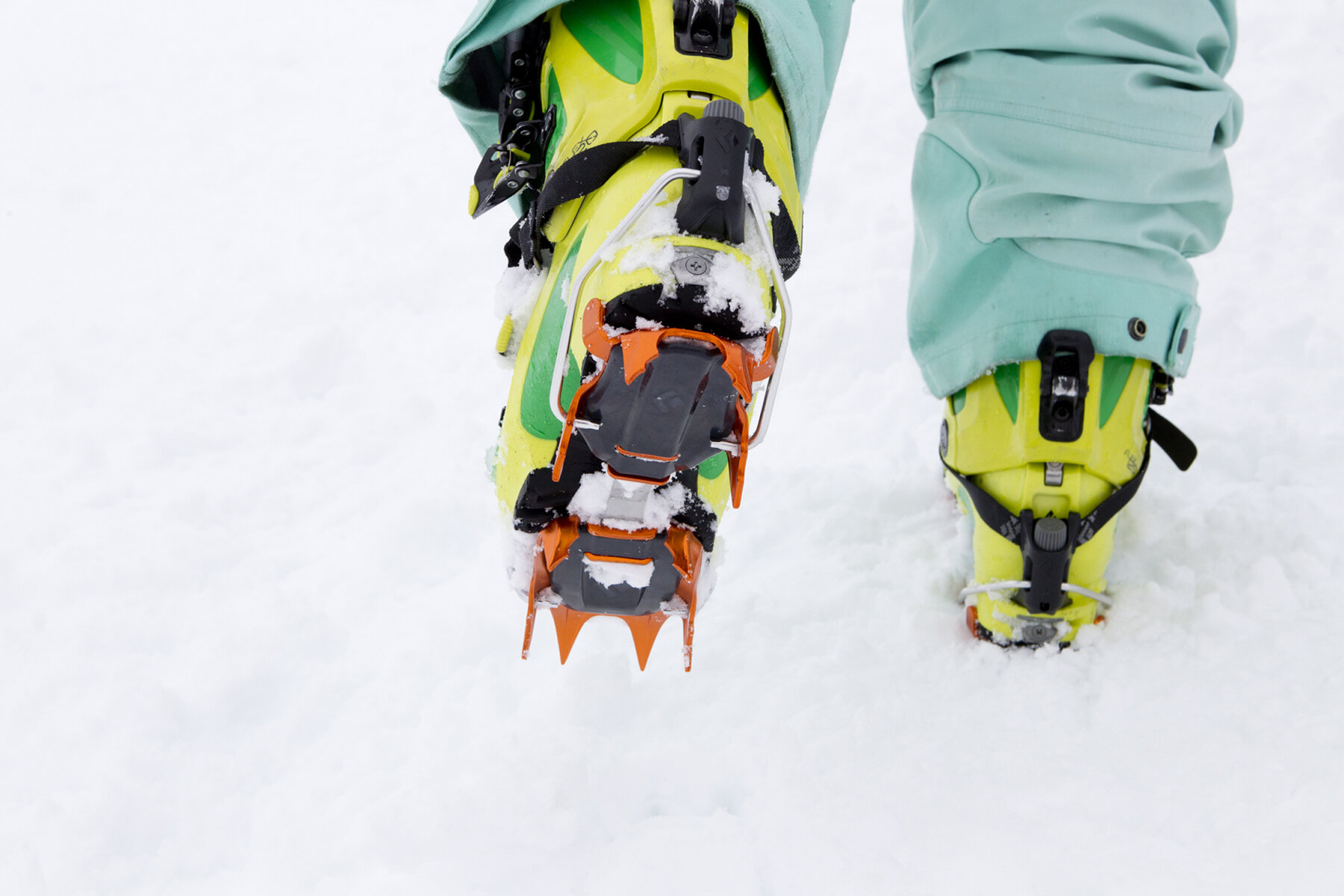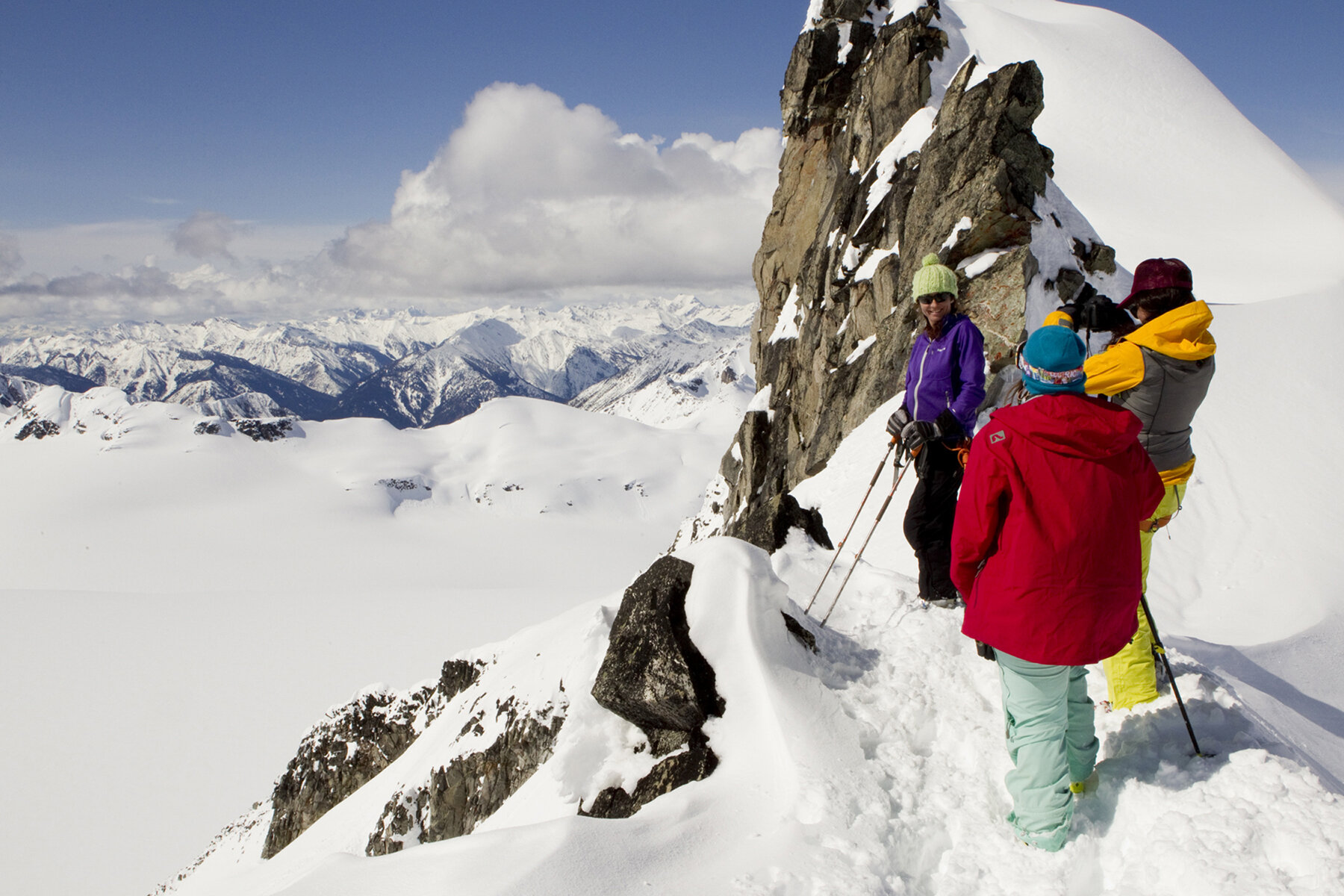PERFECTING THE ART OF BAILING
By Abby Cooper
Calling off a mission is not easy. Mountain folk tend to suffer from serious FOMO and have a hard time saying “no” to the peaks, their friends, and the potential for a great time. But, sometimes bailing on an adventure is the right thing to do. Abby Cooper outlines the factors that influence these decisions and provides a mental checklist to help you make the right call.
From first-hand experience, it’s never fun to turn around. I’ve had to request a turnaround on a touring mission after a recent injury because, by the five-kilometre mark, I already knew I wasn’t physically “there” yet. My partner-in-crime graciously turned around with me, and offered to take a few heavy objects out of my pack and place them in hers as we skinned back to the parking lot. Talk about feeling defeated inside and out.
Sometimes bailing will even happen in the planning process – better than halfway into the trek. It’s not an easy call to make, but pulling the pin on an adventure may prevent unnecessary discomfort, serious injury or even a fatality.
With the help of the voices of experienced adventurers, we’ve compiled this toolkit to help you perfect the art of bailing. First, let’s check in with the various factors at play.
HUMAN FACTORS
The hardest thing to gauge is ourselves. There simply isn’t a forecast for our summit stoke! And I think most of us have encountered a mental block on the trail before. At times it’s something we need to push through and learn from. Other times, it is our turnaround point because we are not in the right mindset, or may not have the abilities to pursue our goals. Whether you’re not in the right headspace to work through a technical route, have a bad vibe about it, or are feeling unprepared, speak up!
Of equal importance, respect others when they do. It might be a bit of a letdown if your adventure buddy is “not feeling it” and requests to turn around, but think about how hard it would be for you to request the same. Having open communication with your team will get you through a hurdle, or make bailing OK. Better to bail than to endure a mental battle for the next five kilometers.
Freeskier Kim Vinet has a great suggestion: “Something I try to reason with myself first and foremost is how bad I want something and generally try to surround myself with folks whose ambitions match mine.”
Surrounding yourself with the right partners in the first place will take the pressure off.
GEAR FACTORS
It’s easy to leave gear behind to lighten your pack, but it’s worth thinking through the worst-case scenario and packing accordingly. Never leave home without a First Aid kit and repair kit, even if they add bulk to your bag.
Ask yourself questions that will help you cover your bases. What if a T-Slot anchor isn’t an option due to snowpack? Does this mission require a satellite phone? Are you comfortable with your gear and familiar with the gear your partner is using? Does any old gear need to be retired?
Answer the questions and take care of business. A broken binding in the backcountry can lead to an emergency situation very quickly. When it comes to new gear, be sure you take it for a test drive before taking it on the trail, especially if your life will depend on it.
Either way, gear can make or break an adventure. If you’re a few kilometres into a trip and realize you forgot a crucial piece of equipment, take time to assess how that might impact your safety down the line. Your friends might tease you for forgetting your tent, but better to be safe than protect your ego.
ENVIRONMENTAL FACTORS
Mother nature’s agenda is always a mysterious one.
In preparation for any trip, check the weather where you’ll be adventuring. Don’t forget that the temperature in the valley is always different from the temperature in the alpine, so keep elevation in mind. Plan for the forecast and allow for wiggle room. We all know too well how quickly the weather can change in the mountains.
When should you bail because of weather? Among a number of reasons, consider bailing when the weather changes the stability of your surface and ability to navigate, when electricity is in the air, or medical concerns, such as hypothermia, arise.
If you’re questioning the snowpack, or slipping into the slackcountry, dig a quick pit or full profile.
Keep in mind that the safety rating can change rapidly throughout the day. It is crucial that you and your team are able to realize when these changes are happening and make the call to get out just as quickly. Constant analysis is key.
CHECK YOURSELF BEFORE YOU WRECK YOURSELF
While summit stories may usually be your favourite to tell, make sure you’re around to tell them. No one ever frowns upon a story where you used good judgment to bail.
With that, here is a mental checklist to keep in mind the next time you’re out adventuring:
Am I prepared for a weather change?
Do I have a set turnaround time?
Did I leave my travel plans with someone and tell them when to expect me back?
Do I have the right gear for the mission and am I familiar with it?
Is my gear properly prepared?
Do all members of my crew (myself included) have enough experience and physical ability for this mission?
How do I feel about my current situation? (Ask when planning, leaving and many times during the trip.)
What am I worried most about? (Voice it!)
A lover of all things outdoors, Abby Cooper is a splitboarder, climber, hiker, adventurer, photographer and writer. She’s living life one adventure to the next with her dog by her side.




